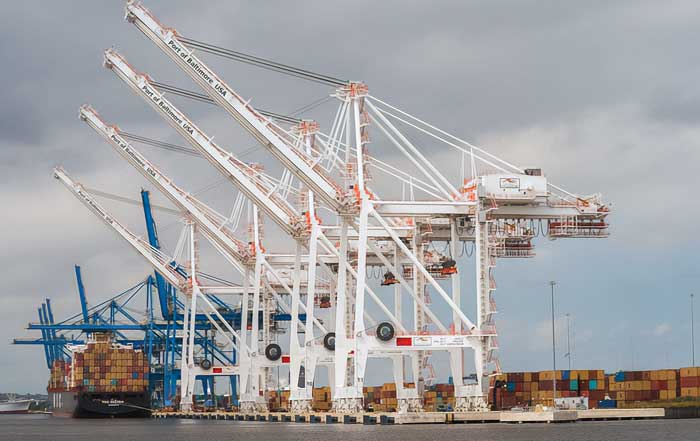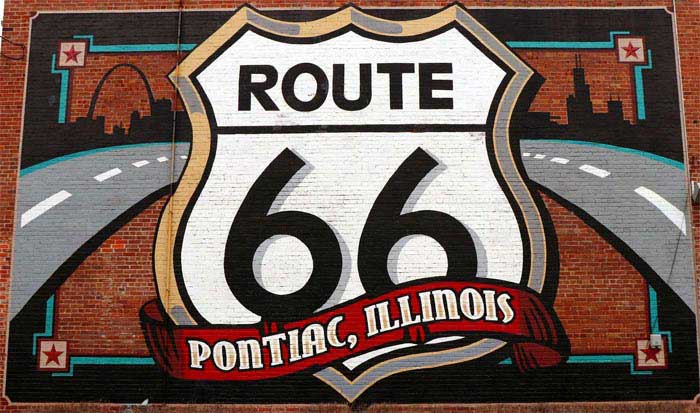The United States stands at the epicenter of the global conversation on climate change, not only because of its economic scale but also due to its geographical diversity, vast industrial base, and strategic leadership role in international policy. As of 2025, the economic impact of climate change on the nation has moved from a matter of speculation to a daily reality felt across industries, communities, and financial markets. Rising sea levels threaten coastal infrastructure, extreme weather disrupts agricultural supply chains, and energy systems face mounting pressure from both rising demand and the push toward decarbonization. At the same time, climate-related risks are reshaping insurance markets, influencing investor sentiment, and driving corporate transitions toward sustainability.
This article examines the multidimensional economic impact of global climate change on the United States, presenting an authoritative exploration of costs, risks, and emerging opportunities. It also explores how different sectors of the economy are adapting, what strategies are being deployed by both public and private stakeholders, and how the U.S. is positioned in relation to the rest of the world.
Rising Costs of Climate Disasters
The financial toll of climate-related disasters in the United States has surged dramatically over the past decade. According to assessments by NOAA and independent economic research groups, the country is now experiencing more billion-dollar weather disasters per year than ever before. Hurricanes battering the Gulf Coast, wildfires devastating California, and flooding in the Midwest are no longer rare occurrences but recurring events with direct implications for GDP growth and fiscal planning.
Coastal states such as Florida, Louisiana, and New Jersey are grappling with rising sea levels that threaten both residential property values and critical commercial hubs. The Federal Emergency Management Agency (FEMA) has increased its climate resilience budget, but insurance companies are retreating from high-risk areas, leaving homeowners and local governments to bear rising costs. This shift in insurance markets is reshaping property markets and raising concerns about housing affordability in vulnerable areas.
Beyond direct disaster damage, supply chain disruptions caused by extreme events have ripple effects across the national economy. When hurricanes shut down refineries or when wildfires close major highways, the results are higher fuel costs, delayed deliveries, and increased volatility in consumer markets. For a deeper look at how climate-linked events influence national financial systems, see Finance.
Agriculture and Food Security Challenges
Agriculture is one of the most climate-sensitive sectors of the U.S. economy. Farmers in the Midwest face unpredictable rainfall patterns, with droughts followed by heavy floods disrupting planting cycles. In California, a state that supplies a large portion of the country’s fruits and vegetables, water scarcity is forcing tough choices about land use and crop prioritization. Rising temperatures are also shifting the geographic range of certain crops, pushing some northward while rendering others less viable.
The economic consequences extend beyond farmers. Food price volatility affects consumers nationwide, contributing to inflationary pressures that ripple across the broader economy. Higher input costs, including water, fertilizer, and insurance premiums, make it harder for small and medium-sized farms to survive. At the same time, larger agribusinesses are investing in technology such as precision agriculture, AI-driven weather prediction, and drought-resistant seeds to adapt. Companies like Cargill and Archer Daniels Midland (ADM) are leading in innovation, though the benefits are unevenly distributed.
Rising food prices also intersect with global trade. As climate change affects agriculture in South America, Europe, and Asia, the U.S. is both an exporter of key commodities and an importer reliant on stable supply chains. This interconnectedness underscores the economic risks and opportunities linked to food security. To understand broader international trade pressures, explore International.
🌍 Climate Economics Dashboard
Interactive Impact Explorer for the United States
Key Economic Impacts
Energy Transition and Economic Transformation
The energy sector is at the heart of climate economics in the United States. Fossil fuel industries remain significant employers and revenue generators in states like Texas, West Virginia, and North Dakota. However, climate policies, market dynamics, and global agreements are accelerating the shift toward renewable energy. By 2025, solar and wind power have become cost-competitive with natural gas in many regions, and corporate demand for clean energy has surged as firms pursue decarbonization strategies.
The economic impact of this transition is twofold. On one hand, legacy industries face job losses, stranded assets, and declining profitability. On the other hand, renewable energy investments are creating new employment opportunities and reshaping regional economies. NextEra Energy, Tesla, and other leaders in renewable infrastructure and electric mobility have become pivotal players in reshaping U.S. competitiveness. Federal and state incentives are accelerating investments in green hydrogen, carbon capture, and grid modernization.
However, the transition is not without challenges. Upgrading infrastructure to handle renewable integration, securing supply chains for rare earth minerals, and balancing energy reliability during extreme weather events remain pressing concerns. These challenges affect not only national energy policy but also employment and regional stability, particularly in states heavily reliant on traditional energy sectors. To learn more about how this intersects with national employment patterns, visit Jobs.
Infrastructure and Urban Vulnerabilities
American infrastructure was largely built in the 20th century, with limited foresight about the long-term effects of climate change. Rising sea levels threaten coastal cities, while inland flooding undermines highways, bridges, and public transit. The cost of upgrading and protecting infrastructure is immense, with American Society of Civil Engineers (ASCE) estimating trillions of dollars in required investments over the coming decades.
Urban centers face particular vulnerabilities. Cities like Miami, New Orleans, and New York are investing in sea walls, upgraded drainage systems, and resilient power grids. However, adaptation costs are uneven across municipalities, and wealthier cities often outpace smaller towns and rural communities in climate readiness. This uneven distribution of resilience funding has implications for economic inequality, insurance markets, and regional competitiveness.
Real estate is another sector heavily impacted. Commercial property developers and investors are increasingly factoring climate risk into valuations. Financial institutions are under pressure from regulators and shareholders to disclose exposure to climate risks, shaping decisions about where capital flows. To follow developments in regulatory frameworks, see Regulation.
Financial Markets and Investor Sentiment
Financial markets are both highly exposed to climate risk and critical in shaping the U.S. response to climate change. Wall Street firms, including Goldman Sachs, BlackRock, and JPMorgan Chase, have expanded climate-focused investment products, reflecting both growing demand from institutional investors and regulatory pressures. Climate-related financial disclosures are becoming standard practice, as outlined by the Securities and Exchange Commission (SEC) and aligned with international frameworks such as the Task Force on Climate-related Financial Disclosures (TCFD).
Insurance companies, once reliable stabilizers of risk, are increasingly limiting coverage in climate-exposed regions. This creates a knock-on effect in mortgage markets, housing affordability, and local tax revenues. Credit rating agencies are incorporating climate vulnerability into assessments, reshaping the borrowing costs of municipalities and corporations.
At the same time, climate finance is an emerging growth area. Green bonds, carbon markets, and sustainable investment funds are expanding rapidly, generating new opportunities for U.S. financial institutions. Companies that demonstrate clear pathways to decarbonization are rewarded with investor confidence, while laggards face reputational and financial penalties. Explore more about market responses in Economy.
Labor Market Implications of Climate Change
The American labor market is being reshaped by climate change in both visible and subtle ways. Outdoor workers—such as those in agriculture, construction, and transportation—are facing heightened risks due to rising temperatures and extreme weather. Heat-related illnesses are becoming more frequent, leading to productivity losses and increased healthcare expenses for employers and employees alike. In states like Arizona and Texas, regulations requiring employers to provide water breaks and shade are being enforced more strictly, reflecting the growing recognition of climate-linked occupational hazards.
At the same time, new industries are creating opportunities for workers. The expansion of renewable energy has spurred demand for solar panel installers, wind turbine technicians, and battery engineers, roles that the U.S. Bureau of Labor Statistics has identified as among the fastest-growing jobs in the country. Programs at community colleges and vocational schools are being adapted to prepare workers for careers in clean energy, sustainable construction, and climate resilience planning.
The labor market transition is not without challenges. Communities dependent on coal mining or oil extraction face job losses, and retraining programs often struggle to keep pace with economic realities. Federal initiatives such as the Inflation Reduction Act of 2022 and subsequent climate-related workforce programs are attempting to bridge this gap, but the social and economic costs of displacement remain significant. This labor dynamic ties directly into broader Employment trends across the nation.
Healthcare Costs of Climate Impacts
One of the less-discussed but highly significant economic consequences of climate change is its effect on public health and associated costs. Rising temperatures contribute to longer allergy seasons, increased asthma rates, and more frequent heatstroke cases. Air pollution, exacerbated by wildfires and fossil fuel combustion, has been linked to cardiovascular disease and premature mortality.
Healthcare systems, already strained by aging populations and rising costs, are facing added pressure from climate-linked illnesses. The Centers for Disease Control and Prevention (CDC) estimates that climate change could cost the U.S. healthcare system billions annually through increased emergency room visits, hospitalizations, and long-term treatments. Employers also bear indirect costs through higher insurance premiums, absenteeism, and reduced worker productivity.
Mental health is another growing concern. Communities hit by repeated climate disasters often report higher rates of anxiety, depression, and post-traumatic stress. These impacts, while harder to quantify in purely economic terms, have deep consequences for workforce participation and social stability. To stay updated on how such health challenges intersect with broader societal issues, readers can turn to News.
International Competitiveness and Geopolitical Considerations
Climate change is not just a domestic issue for the United States—it is a defining factor in its international competitiveness and geopolitical strategy. Global rivals such as China and European Union nations are advancing aggressive climate policies and green industrial strategies, positioning themselves as leaders in renewable energy technology, electric vehicles, and sustainable finance.
For the U.S., the challenge lies in balancing domestic political divisions with the need to lead globally. International agreements such as the Paris Agreement continue to shape American climate diplomacy. U.S. companies face growing pressure to comply with carbon border adjustment mechanisms in Europe, which tax imports based on their carbon intensity. This raises both risks and opportunities for exporters in industries like steel, chemicals, and agriculture.
Additionally, climate change has significant implications for global security. Rising sea levels threaten military bases, especially in coastal regions, while droughts and extreme weather events contribute to instability in fragile states abroad. The Pentagon now includes climate change as a core consideration in defense strategy, recognizing its role as a "threat multiplier." For readers interested in the broader implications on international relations, see International.
Innovation, Technology, and Entrepreneurship
Amid the challenges, climate change has spurred remarkable waves of innovation and entrepreneurship across the United States. Technology companies, venture capitalists, and research institutions are pouring resources into solutions that address decarbonization, adaptation, and resilience. From AI-driven climate modeling platforms to carbon capture technologies and advanced energy storage, startups are emerging as key players in reshaping the economy.
Google, Microsoft, and Amazon have committed to achieving net-zero emissions through large-scale renewable energy purchases and advanced carbon removal investments. Meanwhile, smaller innovators are focusing on areas such as climate-friendly construction materials, vertical farming, and sustainable transportation. The Massachusetts Institute of Technology (MIT) and Stanford University are leading academic hubs driving technological breakthroughs with commercial potential.
The U.S. entrepreneurial ecosystem provides fertile ground for climate-related startups, supported by venture firms like Breakthrough Energy Ventures and accelerators dedicated to sustainability. These innovations are not just technical but also financial, with climate-focused fintech platforms enabling carbon offset marketplaces and green lending. For coverage of how such technology shapes the broader economy, readers can explore Technology.
Regional Economic Inequalities
One of the defining features of climate economics in the U.S. is its uneven impact across regions. The Gulf Coast is highly vulnerable to hurricanes, while the Midwest faces agricultural disruptions, and the West contends with drought and wildfires. These regional differences are deepening existing economic inequalities, creating challenges for policymakers tasked with equitable climate adaptation.
Wealthier communities often have greater resources to invest in resilience infrastructure, from flood defenses to upgraded building codes. Meanwhile, low-income and rural communities are disproportionately affected by both climate risks and the economic disruptions of the energy transition. This disparity raises questions about climate justice and the long-term stability of regional economies.
Federal funding programs are attempting to address these disparities, but implementation remains inconsistent. The economic fate of these regions will play a critical role in shaping national political debates, influencing everything from federal budget priorities to the competitiveness of states in attracting businesses and talent. To understand the intersection of these trends with lifestyle and local communities, see Lifestyle.
Long-Term Strategies for Resilience and Adaptation
The economic story of climate change in the United States is not solely about costs and risks—it is also about resilience, adaptation, and long-term strategy. Federal and state governments are increasingly adopting comprehensive climate action plans that integrate economic, environmental, and social goals. Cities are investing in green infrastructure, from urban forests to permeable pavements, to mitigate flooding and heat islands.
Businesses are embedding climate resilience into their long-term planning. Supply chain diversification, renewable energy procurement, and carbon neutrality commitments are no longer optional but essential to competitiveness. The World Bank, International Monetary Fund (IMF), and global investors are closely monitoring the extent to which the U.S. economy is aligning with sustainable growth trajectories.
On the global stage, the U.S. has an opportunity to assert leadership by exporting clean technologies, setting international standards, and financing climate resilience in developing countries. Domestically, the challenge lies in ensuring that investments are not just concentrated in high-tech hubs but also spread to communities that need them most. Readers can learn more about evolving federal strategies in Business.
The economic impact of global climate change on the United States is profound, multifaceted, and unavoidable. From rising disaster recovery costs and shifting agricultural systems to energy transition challenges, healthcare burdens, and financial market adaptations, every sector of the economy is being reshaped. At the same time, the crisis is catalyzing innovation, driving investment in new industries, and redefining the country’s international role.
For usa-update.com readers, the key takeaway is that climate change is no longer an abstract environmental issue—it is a defining economic reality. Its influence can be seen in inflation rates, employment patterns, insurance markets, and even in how American companies compete globally. The path forward requires a delicate balance between adaptation and opportunity, ensuring that the United States not only survives the economic disruptions of climate change but also thrives in leading a sustainable global economy.
Case Studies of Climate Change’s Economic Impact
Florida: Hurricanes, Insurance, and Real Estate
Florida has become one of the most prominent case studies in how climate change affects economic stability. Repeated hurricane seasons, intensified by warming ocean waters, have inflicted billions in damages. The insurance industry has responded by drastically raising premiums or withdrawing from the state entirely, leaving homeowners with fewer options for coverage.
This exodus of insurers has begun to reshape the real estate market, where property values in flood-prone areas are under pressure. Coastal communities once seen as safe havens for retirees and tourism are now facing growing uncertainty. Developers and investors must weigh the long-term sustainability of projects against the likelihood of future climate disasters. The ripple effect is clear: local tax bases shrink, municipal borrowing costs rise, and Florida’s economy must increasingly dedicate resources to resilience rather than growth.
Tourism, a central pillar of Florida’s economy, also suffers when storms damage infrastructure or create the perception of risk. Hotels, restaurants, and small businesses dependent on tourist flows see declining revenues after major events. For more insights into how entertainment and travel sectors adapt, explore Entertainment and Travel.
California: Wildfires and Energy Transitions
California represents another vivid example of climate-driven economic disruption. Over the last decade, wildfires have caused unprecedented losses, with the California Department of Insurance estimating tens of billions of dollars in claims. Entire communities have been displaced, and businesses from agriculture to technology hubs have faced supply chain interruptions due to evacuation orders, power outages, and damaged logistics networks.
The energy sector is particularly affected. In response to wildfire risks, utilities like Pacific Gas and Electric (PG&E) have implemented large-scale power shutoffs during high-risk weather, disrupting businesses and households. At the same time, California has positioned itself as a leader in renewable energy adoption, electric vehicles, and carbon reduction policies. Investments in solar power, wind energy, and battery storage are creating jobs and positioning the state as a hub for clean technology.
However, the dual challenge of mitigating wildfire risks while driving a clean energy transition illustrates the complexity of climate economics. California’s success or failure in managing these risks will have national and international implications, particularly given the state’s outsized role in technology and innovation.
Midwest: Agriculture, Drought, and Floods
The Midwest, often called America’s breadbasket, is heavily reliant on stable weather conditions to maintain agricultural productivity. Climate change has introduced more volatile rainfall patterns, with alternating droughts and floods disrupting planting and harvesting cycles. Corn and soybean yields are increasingly unpredictable, creating economic instability for farmers and ripple effects on food prices nationwide.
The U.S. Department of Agriculture (USDA) has invested in research to develop climate-resilient crops and precision agriculture techniques. Farmers are adopting advanced irrigation systems, soil monitoring sensors, and AI-based forecasting to reduce losses. Yet, these technologies often require significant upfront capital, creating barriers for smaller operations.
When yields decline, the impact goes beyond rural communities. Supply chains that serve food processors, grocery retailers, and international markets all feel the consequences. Price fluctuations influence consumer spending and inflation, feeding directly into broader Consumer challenges.
Alaska: Melting Permafrost and Indigenous Economies
Alaska offers a unique perspective on climate change impacts. Melting permafrost threatens not only ecosystems but also infrastructure such as roads, pipelines, and homes. The economic cost of repairing or relocating infrastructure runs into billions, creating fiscal challenges for both the state and federal government.
For Indigenous communities, climate change disrupts traditional hunting and fishing practices, undermining both cultural heritage and local economies. The thawing of Arctic regions also opens new shipping routes and potential resource extraction opportunities, raising geopolitical questions about sovereignty, environmental protection, and international trade.
The U.S. Navy has already adjusted strategies to account for increased Arctic activity, reflecting the military and economic implications of a changing climate in the far north.
Industry-Specific Impacts
Automotive and Transportation
The automotive industry is experiencing one of the most profound transformations due to climate change. Consumer demand, regulatory pressure, and investor expectations are pushing automakers toward electric vehicle (EV) adoption. General Motors, Ford, and Tesla are investing billions into EV production, charging infrastructure, and battery innovation.
This shift has far-reaching consequences. Supply chains for batteries require rare earth minerals, much of which are sourced internationally, creating new dependencies. Meanwhile, states like Michigan and Ohio are retooling factories and retraining workers to remain competitive in the new automotive economy.
Climate change also disrupts transportation logistics. Flooded highways, damaged ports, and extreme weather events can delay shipments, raising costs for businesses across sectors. To see how these changes intersect with broader trade challenges, explore Economy.
Tourism and Hospitality
Tourism, a multi-trillion-dollar global industry, is highly sensitive to climate change. In the United States, destinations from ski resorts in Colorado to beach towns in Hawaii are adapting to shifting weather patterns. Rising temperatures shorten ski seasons, while coastal erosion and coral bleaching affect beach tourism.
Hospitality companies such as Marriott International and Hilton are investing in sustainable building practices and carbon reduction initiatives to appeal to environmentally conscious travelers. Airlines face mounting pressure to decarbonize, with biofuels and electrified aviation seen as long-term solutions.
Yet, disruptions from extreme weather events create volatility, with travel demand spiking or collapsing depending on conditions. For insights into broader event-driven changes, see Events.
Banking and Insurance
The banking sector plays a crucial role in financing resilience and adaptation efforts. Wells Fargo, Bank of America, and other major U.S. banks have pledged billions toward climate-related lending and green finance. These initiatives support renewable energy projects, sustainable agriculture, and resilient infrastructure.
Insurance companies, on the other hand, face rising claims and must balance profitability with social responsibility. As climate disasters increase in frequency, insurers retreat from high-risk markets, shifting costs onto individuals and governments. This dynamic reshapes housing affordability, mortgage lending, and long-term economic growth in vulnerable regions. For detailed coverage of finance and risk management, see Finance.
The Global Dimension
Climate change does not respect borders, and the economic impacts on the U.S. are deeply tied to global developments. Droughts in South America affect U.S. soybean exports, while floods in Asia disrupt supply chains for electronics and textiles. International cooperation is becoming essential, with organizations like the United Nations and World Trade Organization (WTO) shaping frameworks that influence U.S. trade policy.
Furthermore, U.S. leadership in climate innovation provides export opportunities. American clean technology firms are expanding into Europe, Asia, and Africa, where demand for sustainable solutions is rising. This not only strengthens the economy but also bolsters diplomatic influence. Readers can follow more on international business and policy shifts in International.
Closing Thoughts
The economic impact of global climate change on the United States is both a crisis and an opportunity. The costs are undeniable—ranging from infrastructure damage and agricultural volatility to healthcare burdens and financial risks. Yet, the transition toward a low-carbon economy presents new growth avenues, job creation, and technological leadership.
For usa-update.com readers, the essential insight is that climate change is no longer a distant problem but a central driver of economic decisions across industries and regions. Policymakers, businesses, and individuals must act decisively to manage risks and harness opportunities. The balance struck in the coming decade will determine whether the United States leads the global green economy or struggles under the weight of climate-driven economic disruption.










